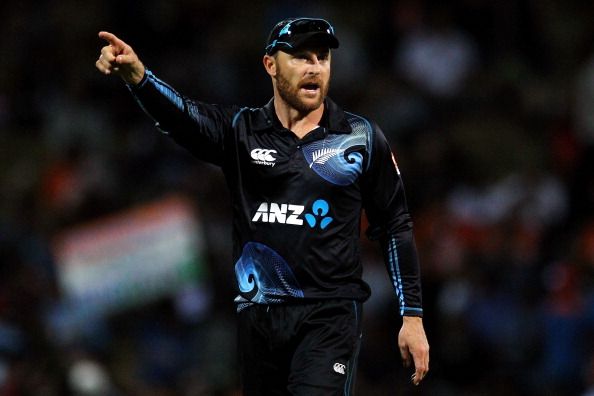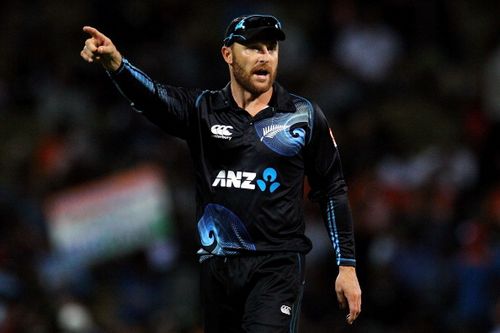
Why New Zealand can be next World Champions in cricket

They are a highly unlucky cricket squad. For the majority of their long journey in the Gentleman’s Game, they have performed admirably, courageously and with considerable aplomb, only to fall short at the final hurdle. Each defeat has only made them stronger and hungrier, and they keep rising from the ashes. But something happens to their soul during crunch situations, such as the 1992 World Cup semi-final against Pakistan, and they eventually collapse into pieces, thus once again having to re-build themselves.
That’s the New Zealand cricket team for you. Proud owners of monikers such as the All-Blacks and the Black Caps, the trans-Tasman rivals of the Australian team have had mixed results ever since their entry into the sport in 1930. In the eight decades since, the sides have seen their fortunes fluctuate from zenith to nadir so fast that it makes the head spin. Given the immense amount of talent they possessed since the arrival of the legendary Sir Richard Hadlee, the Kiwis ought to have won every single tournament during the eighties and nineties. Till date, they have managed just a solitary ICC Championship win: the 2000 Mini-World Cup.
But the winds of change are blowing rapidly over the cold suburbs of Wellington, across the lush green meadows of Auckland and right up to Christchurch, where sits the governing body of cricket in the country: New Zealand Cricket. Of late, a new resurgence has been glimpsed in the Black Caps: a change of guard at the top and infusion of young talent seems to have worked wonders. Some of the results are already evident, as the recent wins over India in both Test and ODI cricket suggest.
Here are four reasons why I believe the current New Zealand side has what it takes to be world champions:
The all-rounder luxury
The current squad packs a lot of power in the all-rounder department. Newcomers Corey Anderson and Jimmy Neesham are the perfect replacements for the void left by Jacob Oram and Craig McMillan. While old warhorse Scott Styris is still around with his pugnacious batting style and deceptive bowling, it is Anderson and Neesham who will carry on the legacy created by Hadlee and extended by Lance and Chris Cairns. The former has the distinction of scoring the quickest ODI century and is more than handy in the field, as well, while the latter has posted a Test century on debut. Both of them are mean, committed bowlers and bring in a vibrancy that has been missing in Kiwi cricket for a long time now.
The battle-hardened skipper
Brendon McCullum is famed for his powerful stroke-play, acrobatic fielding and quicksilver reflexes behind the stumps. The Otago native also possesses a keen cricketing brain, and his experience as a wicket-keeper allows him to have extensive knowledge of scoring areas, the perfect lengths to bowl to rival willow-wielders, and possible regions where catches can be snapped up easily.
He is a battle-hardened leader, one who has crossed swords with the best in the business. His Twenty20 sojourns around the world have electrified die-hard cricket fans. McCullum plays the game with no holds barred and is the perfect candidate to drive this resurgence of the Kiwi national squad, because it is his fighting spirit that is the heart of this youthful side.
The pace arsenal
Not everyone can be a Richard Hadlee or a Shane Bond, but that doesn’t stop the likes of Tim Southee, Neil Wagner, Trent Boult, and Mitchell McClenaghan from doing their best. The quartet, backed up by the Anderson-Neesham pair, is quite a handful for any opposition; in tandem and at full tilt, they remind one of the fearsome Caribbean pace battery of the seventies and eighties.
Of course, they can be wayward at times, but this is the attack that can destroy any line-up on a given day. Blessed with speed and accuracy, these four young guns have a long way to go in the melting pot of international cricket, yet they would bowl their hearts out for a nation long bereft of true championship glory for the last fourteen years.
Matt Henry and Adam Milne, along with Hamish Bennett, can be more than reliable themselves. It is the exuberance and aggression of youth that this potent seam attack of New Zealand might just leave a trail of destruction in their wake while surging to the summit called World Champions.
The Willow Wielders
If Lance Cairns’ Excalibur could decimate bowling attacks around the world without its wielder breaking a sweat, New Zealand’s exciting stroke-players can hardly remain far behind. Although the willow has become much more robust and powerful, it is the skill of these players that will stand the Kiwis in good stead as they begin to re-conquer worlds.
Martin Guptill, in full flow, is a complete batsman. Hamish Rutherford is still finding his feet in international cricket, though he promises to be one of the most fluent southpaws in the side after former skipper Stephen Fleming. But New Zealand’s biggest strengths in this aspect lie in the lanky Kane Williamson: classical strokeplay combined with the ability to hit the roof of the stadium is an asset few possess. The young Northern Districts player, banned from bowling by the International Cricket Council (ICC), has responded to the challenge with a vengeance: by focusing more on his batting and scoring quickly based on the format.
With Jesse Ryder out of commission, the onus of consolidating the innings falls on Williamson, and it is a phase he has excelled in. Also, having Ross Taylor and skipper McCullum for company helps a lot: help Williamson know his role well and develop into a truly world-class player.
Summary
With a side that is reminiscent of the one led by the crafty Martin Crowe in 1992, the Black Caps seem poised to dominate the world of cricket in the next couple of years. I do not know when this would happen, but there are ominous signs of them doing one better at the 2015 World Cup. Oppositions, beware: the Trans-Tasman devils are ready to roar!